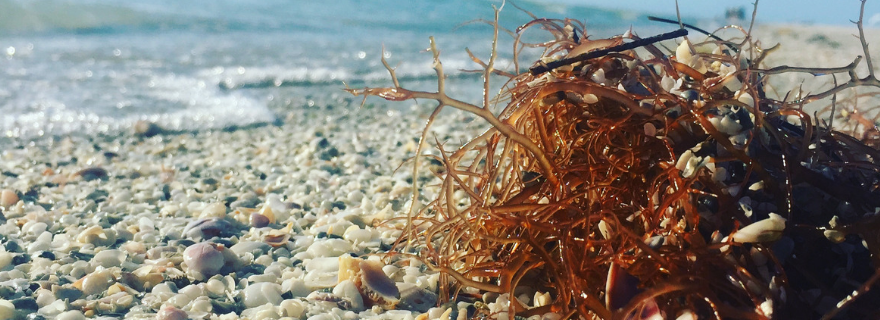
“Dr. Beach” rates beaches around the world based on 50 separate criteria including the color of their sand (pinkish white is best), the smell (rotting seagrass is stinky), and debris (even the natural stuff is bad). Although several Tampa Bay beaches have been rated as among the best in the world, they’re not always the best choice for wildlife if they’ve been raked of all debris.
Birds, turtles, crabs, shells and worms don’t eat sand – they eat the debris that washes up along the shores. Scientists call it a “wrack line,” and it may be the most interesting part of the beach if you know what you’re looking for.
Without debris on the wrack line, beaches would be a desert, said Blair Witherington, a former biologist with the Florida Fish and Wildlife Conservation Commission and author (with his wife Dawn) of Florida’s Living Beaches. “Nothing eats sand,” he said. “If you want wildlife, you need to leave them food.”
Winter is the best time to explore a living beach because northwest winds from cold fronts sweep living matter onto beaches where it attracts critters ranging from migrating birds to worms and tiny crustaceans that become food for larger creatures. “Without wrack lines, you don’t get the tiny crabs that attract shorebirds,” he said.

Photo by Maya Burke
Wrack lines are also great for scavenger hunts, he says. Give kids a list (check here for a start) and send them off along the shore. They’ll discover the differences between seagrasses, sea beans and mangrove propagules, and sponges and sea fans. They’ll probably see fiddler crabs – and discover why they’ve earned that strange name. Maybe they’ll even find a ghost crab, which makes tracks that look like six rows of widely spaced commas. Their burrows can extend for up to 4 feet deep, so even if they never see a crab, just the tracks are cool to find.
Scavenger hunts also can be expanded to the trash that is usually found in wrack lines near urban areas. Kids can earn points for picking up empty cans and water bottles, six-pack containers, trash bags and cigarette butts while they learn how important it is to protect wildlife from trash.

Like the living plants underwater, seagrasses that wash up on a beach are home to a multitude of tiny animals that, in turn, attract larger animals who prey upon them. And at least one study, published in 2003, indicates that beaches that were raked too often are associated with higher water turbidity, a destabilized sea floor, and the complete loss of animals that live in sediment.

Wrack lines may occasionally have a slightly disagreeable odor as they decay, but without them, there would be less food for birds that attract thousands of people to our beaches and fewer critters for the rest of us to study.
Learn more about wrack lines with this free printable pamphlet or find a copy of “Florida’s Living Beaches” online. (Warning – you may never go to a beach without your copy once you’ve tried it though!)
[su_divider]